How Can Various Infections and Abscesses Affect Your Tooth?
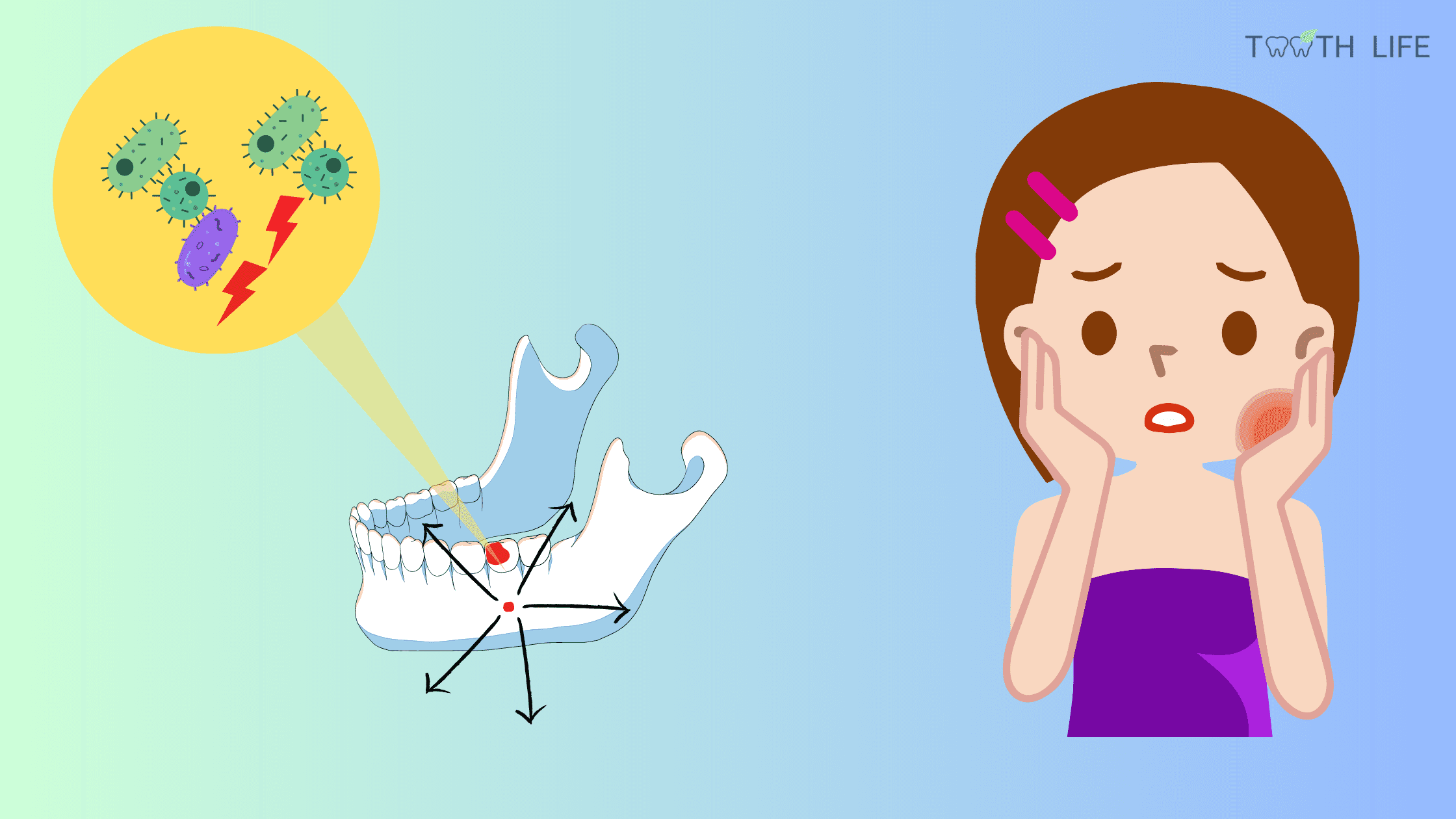
Experiencing sudden tooth pain and swelling? It could be a tooth infection.
This condition occur when bacteria enter the inside of a tooth, leading to painful pus buildup. Causes include untreated cavities, gum disease, and tooth fractures. Immediate treatment is crucial as untreated infections can spread and cause serious complications.
In this article, we'll discuss the types, causes, symptoms, and potential complications of dental infections, as well as helpful tips for preventing this problem.
In this article:
1. How to know if my tooth is infected?
2. Types of dental infections:
3. Who is most at risk for dental infection?
4. How is tooth infection diagnosed?
5. How is tooth infection treated?
6. Healing and recovery:
7. How can the infection spread if left untreated:
8. How to prevent tooth infection?
How to know if my tooth is infected?
A tooth infection, also known as an abscessed tooth, is one of the most painful dental conditions.In its chronic form, it can evolve slowly and silently for many years without causing any pain. However, once awakened, it may show some signs, such as:
- Throbbing or a constant toothache that does not go away with painkillers.
- Swelling, redness, or pus around the affected tooth or gum.
- Fever, headache, or nausea.
- Foul taste or smell in your mouth.
- Difficulty chewing, swallowing, or opening your mouth.
If you experience any of these symptoms, you should see your dentist as soon as possible. A tooth infection can spread to other parts of your body and cause serious complications if not treated promptly.
Types of dental infections:
There are different types of tooth infections depending on where the abscess forms and what causes it.1. Periapical abscess:
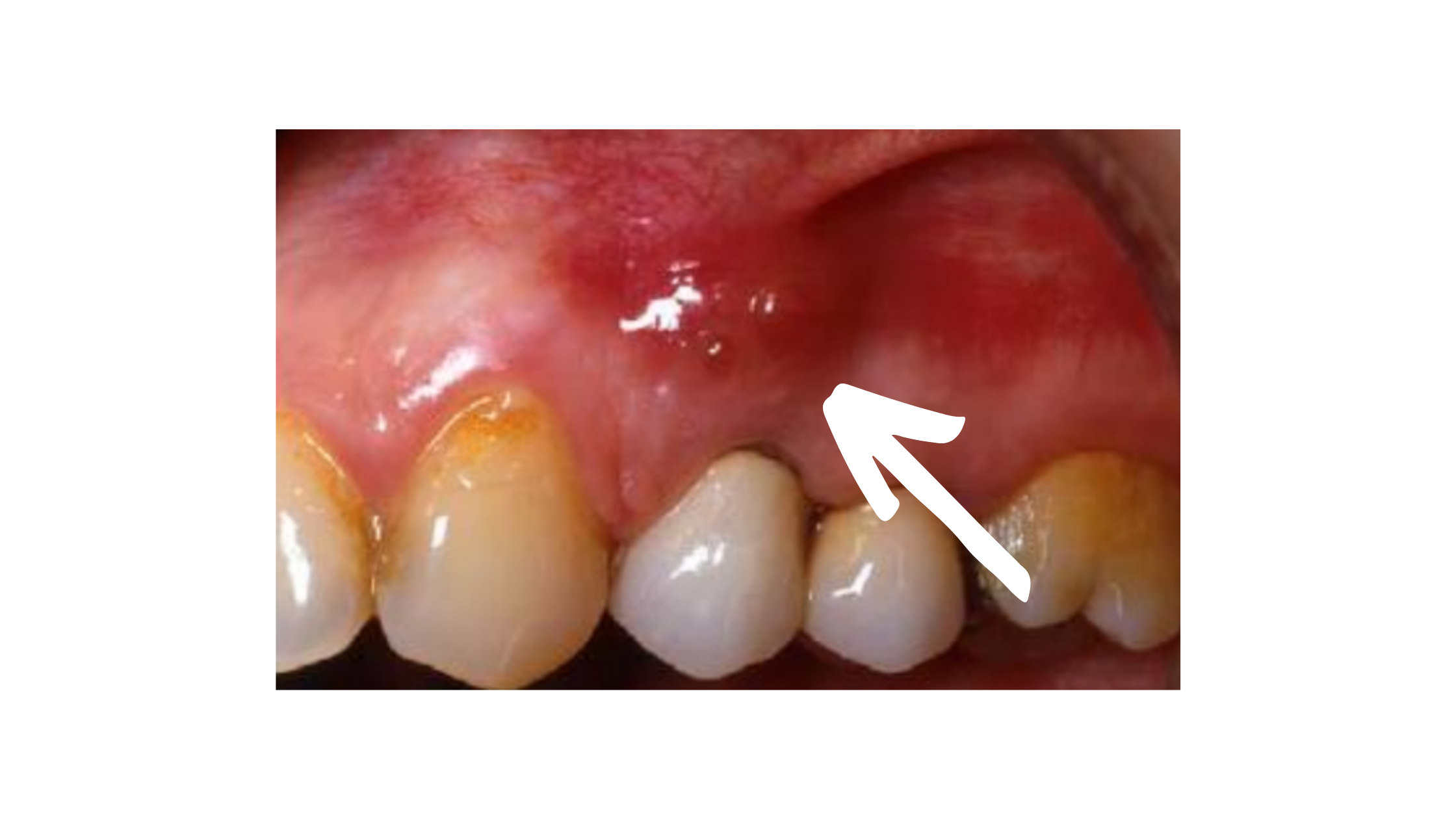
This is the most common type of tooth infection. It occurs at the tip of the root, called the apex. The bacteria first enter the pulp, which is the soft tissue in the center of the tooth that contains nerves and blood vessels. They then make their way through the roots to reach the apex, causing inflammation and pus formation in this area.
A periapical abscess can affect any tooth, but it is more common in the back teeth (molars and premolars). The causes include:
A periapical abscess can affect any tooth, but it is more common in the back teeth (molars and premolars). The causes include:
- Untreated cavity
- Cracked or broken tooth
- Previous failed dental procedures (such as a root canal)
- Trauma to the tooth
- Weakened immune system
- Poor oral hygiene
2. Periodontal abscess:
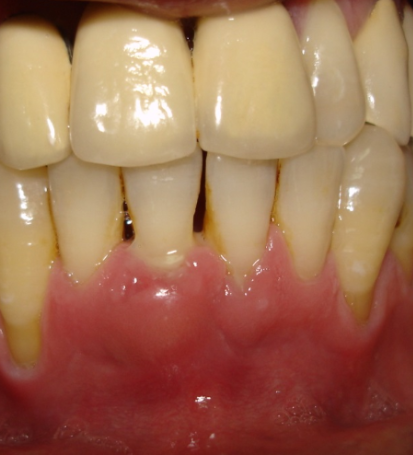
Periodontal abscess occurs in the gums at the side of a tooth root, usually as a result of gum disease (periodontitis). The bacteria infect the space between the tooth and the gum, causing pus to collect and damage the surrounding bone and tissue.
A periodontal abscess can affect any tooth, but it is more common in people who have poor oral hygiene, diabetes, or other conditions that weaken the immune system.
A periodontal abscess can affect any tooth, but it is more common in people who have poor oral hygiene, diabetes, or other conditions that weaken the immune system.
3. Gingival abscess:
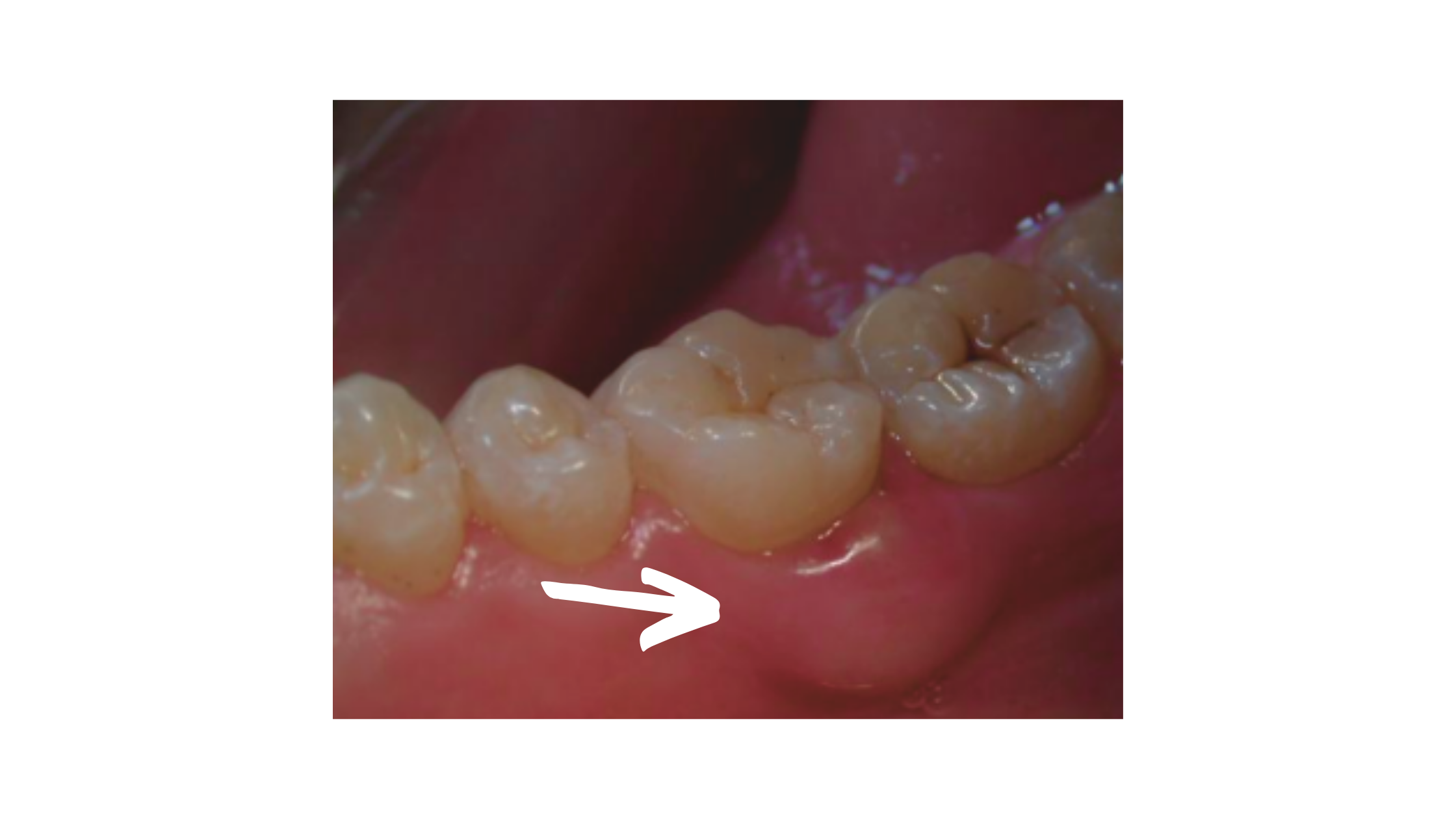
This type of infection occurs on the surface of the gums. It usually results from a foreign body, such as a popcorn kernel or toothpick, getting stuck in the gum and causing irritation and infection.
4. Pericoronal abscess:
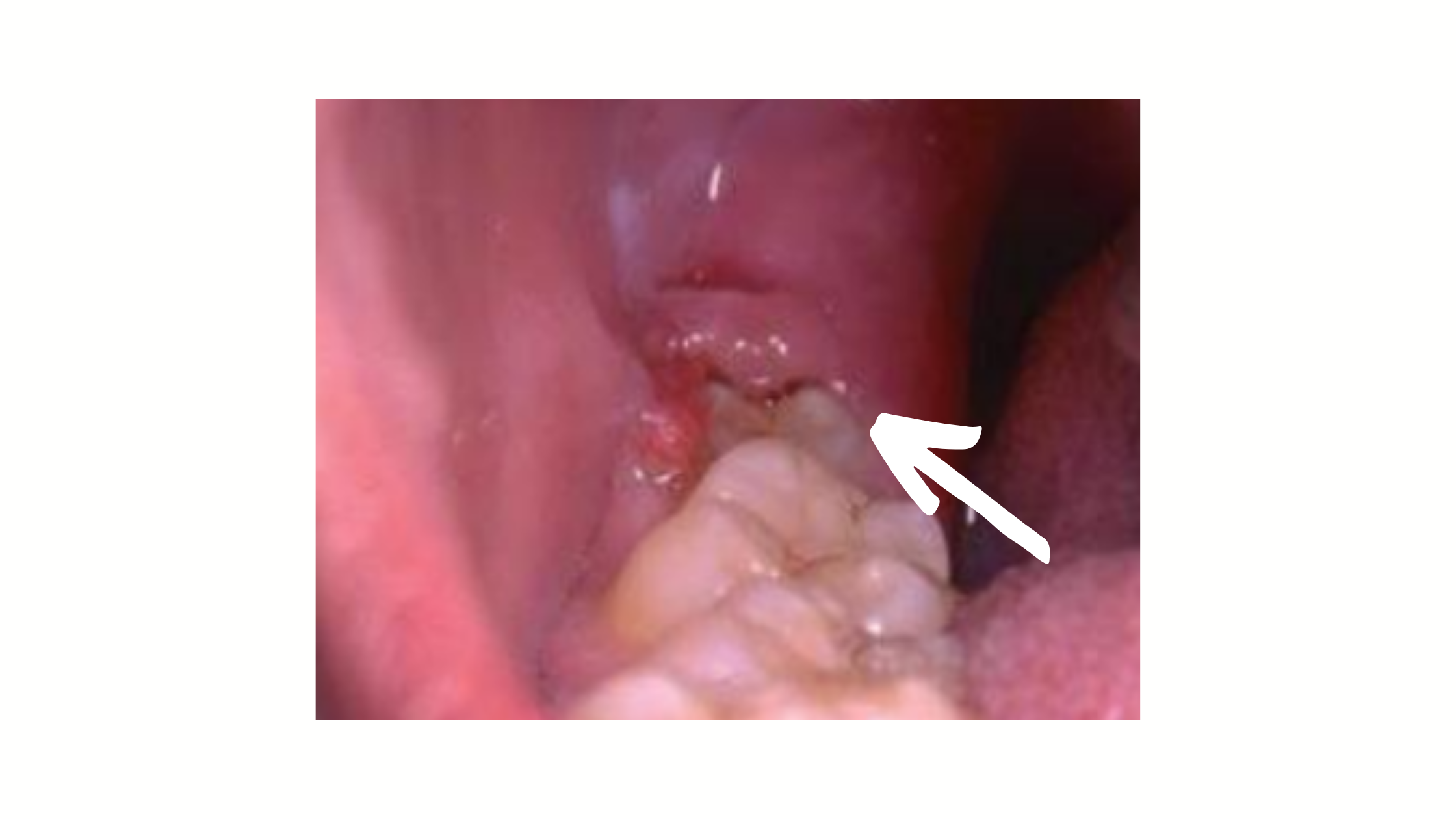
This condition occurs around the crown of a partially erupted tooth, usually a wisdom tooth. The bacteria get trapped under a flap of gum tissue that covers the tooth, causing infection and swelling.
A pericoronal abscess can also affect other teeth that have not fully emerged from the gums, such as baby teeth or permanent teeth that are delayed in eruption.
A pericoronal abscess can also affect other teeth that have not fully emerged from the gums, such as baby teeth or permanent teeth that are delayed in eruption.
Who is most at risk for dental infection?
Many factors can increase your risk of dental infection. These include things like:- Untreated cavities: According to one study, approximately 27% of adults aged 20 to 64 have untreated tooth decay.
These are small holes in the tooth enamel that are caused by the breakdown of sugar and starch by bacteria in the mouth. Cavities can expose the inner layer of the tooth (the pulp) to bacteria, leading to infection and inflammation at the tip of the root (periapical abscess). - Injury or prior dental work: A chip or crack in the tooth can allow bacteria to enter the pulp and cause infection. Similarly, a dental procedure such as a filling, crown, or failed root canal can sometimes introduce bacteria into the tooth or leave some infected tissue behind, resulting in an abscess.
- Poor dental habits and care: Not brushing your teeth twice a day, not flossing regularly, and not visiting your dentist for check-ups and cleanings can all increase your risk of dental problems, such as plaque buildup, gum disease, and tooth decay. These conditions can damage your teeth and gums and make them more vulnerable to infection.
- Smoking: Smoking can impair your immune system and reduce blood flow to your gums, making it harder for your body to fight off infection and heal. Smoking can also cause dry mouth, which reduces saliva production and increases the risk of plaque formation and tooth decay.
- Poor immune system: If you have a medical condition that affects your immune system, such as diabetes, HIV, or cancer, you may be more susceptible to dental infection. This is because your body may not be able to fight off the bacteria that cause infection or heal properly after an injury or dental procedure.
- Improper use of antibiotics: Taking antibiotics when you don't need them or not finishing your prescribed course can lead to antibiotic resistance. This means that some bacteria may become stronger and harder to kill with antibiotics. This can make it more difficult to treat dental infection and prevent it from spreading.
How is tooth infection diagnosed?
To diagnose a tooth infection, your dentist will perform a thorough examination and use different tools to assess the condition of your tooth and gums. Some of the steps involved are:- Pressing on the tooth and surrounding tissues to see if pus or fluid is coming out. This indicates that there is an accumulation of bacteria and dead tissue inside the tooth or under the gum.
- Performing a thermal test to see if the tooth is still alive or not. Your dentist may apply hot or cold stimuli to the tooth and ask you to report any sensation. If you feel pain or sensitivity, it means that the nerve inside the tooth is still functioning. If you feel nothing, it means that the nerve has died.
- Taking X-rays to identify the tooth involved, the extent of the infection, and the state of the surrounding tissues. X-rays can show if there is any damage to the bone or if there are any pockets of pus around the tooth root. They can also help your dentist plan the best treatment option for your case.
How is tooth infection treated?
The treatment for a tooth infection depends on the type and severity of the infection. Some of the possible treatments are:- Incision and drainage: Your dentist may make a small cut in the abscess and drain out the pus. This will instantly relieve pain and pressure.
- Root canal treatment: Your dentist may perform a root canal procedure to save your infected tooth. This involves drilling a hole in your tooth, removing the infected pulp, cleaning and disinfecting the root canal, and filling and sealing it with a dental material. Then, you'll probably receive a crown over the tooth to protect it from further damage.
- Extraction: This is the last resort if the tooth cannot be saved by root canal treatment. Then, the tooth must be replaced by an implant or a bridge.
- Antibiotics: If the infection is limited to the abscessed area, you may not need antibiotics. But if the infection has spread to nearby teeth, your jaw, or other areas, your dentist will likely prescribe antibiotics to stop it from spreading further.
Healing and recovery:
The recovery time for a tooth infection varies depending on the type of treatment and how well you follow your dentist's instructions.Generally, you can expect to feel some pain and discomfort for a few days after the procedure. You may also have some swelling, bruising, or bleeding in your mouth. These symptoms should improve gradually as your mouth heals.
The gums tend to recover relatively quickly within the first week following treatment. However, the healing of bone that has been damaged by infection may require a longer period of time, potentially taking several months.
Here are a few tips to help you through the recovery period:
- Take the medication as directed and continue taking it for the recommended duration.
- Apply the cold compress for 10-20 minutes at a time, several times a day, for the first 24 hours after treatment.
- Rest for the first 24 hours after treatment and avoid strenuous activity for the first few days.
- Avoid smoking or using tobacco products for at least the first few days after treatment.
- Start with soft foods and gradually introduce more solid foods as your mouth heals.
- Rinse your mouth with warm salt water or baking soda.
- Gently brush your teeth with a soft-bristled toothbrush and avoid flossing around the affected area for the first few days after treatment.
- Keep your follow-up appointments with your dentist to check on your healing progress.
How can the infection spread if left untreated:
A tooth infection is not something to ignore. Without proper treatment, it can spread to other areas of your body and cause serious and potentially life-threatening complications. Some of the potential complications are:- Bone infection or osteitis: An infection of the bone surrounding the tooth can cause pain, swelling, and inflammation in the jaw and face. It can also damage the bone and affect its ability to heal.
- Sinusitis: The infection can spread to the sinuses, which are bony cavities above your upper back teeth. This can cause severe pain and pressure around the cheeks, headache, and nasal congestion.
- Cellulitis: The infection can spread to the soft tissues around the tooth, including the skin and fat. This can cause redness, warmth, swelling, and pain in the affected area. It can also spread to the lymph nodes and bloodstream and cause fever and chills.
- Ludwig's angina: If the infection spreads to the area below the lower jaw, it can cause difficulty swallowing, breathing, or speaking. It can also compress the airway and cause suffocation.
- Sepsis: A serious medical condition in which the immune system severely overreacts to an infection in the blood. This can cause organ failure, shock, and death.
- Endocarditis: A serious complication of a tooth infection where bacteria spread to the heart, causing inflammation and damage to heart valves. Symptoms include fever, fatigue, joint pain, and heart murmur.
- Brain abscess: A rare but life-threatening complication of a tooth infection where bacteria spread to the brain, causing a pus-filled pocket. Symptoms include headache, fever, nausea, vomiting, and confusion, and in severe cases, it can lead to seizures, coma, or death.
How to prevent tooth infection?
When it comes to your oral health, prevention is better than cure. By taking some measures, you can prevent tooth infection and keep your teeth and gums healthy and strong. Here are some tips:- Brush your teeth at least twice a day with fluoride toothpaste. This will help remove plaque, a sticky film of bacteria that can cause cavities and gum disease.
- Floss your teeth daily to remove food particles and plaque from between your teeth and under your gums. This will prevent bacteria from building up and causing infection.
- Limit your sugar intake, as sugar can feed the bacteria that cause tooth decay and infection. Avoid sugary drinks, candies, and snacks, and choose healthy foods like fruits, vegetables, nuts, and cheese.
- Visit your dentist regularly for checkups and cleanings. Your dentist can detect and treat any signs of tooth decay or gum disease before they become serious.
- Avoid smoking or chewing tobacco, as these habits can damage your teeth and gums and increase your risk of infection.
- If you think you have a tooth infection, see your dentist as soon as possible. Do not ignore or delay seeking dental care, as this can make the infection worse and harder to treat.
- Periodontal Abscess https://www.ncbi.nlm.nih.gov/books/NBK560625/
- Dental Abscess https://www.ncbi.nlm.nih.gov/books/NBK493149/
- Textbook of General and Oral Surgery
- Bilateral Maxillary and Mandibular Periapical Abscesses https://www.ncbi.nlm.nih.gov/pmc/articles/PMC9038579/
- Dental abscess - Antibiotic use in dental infections https://www.mayoclinic.org/diseases-conditions/tooth-abscess/diagnosis-treatment/